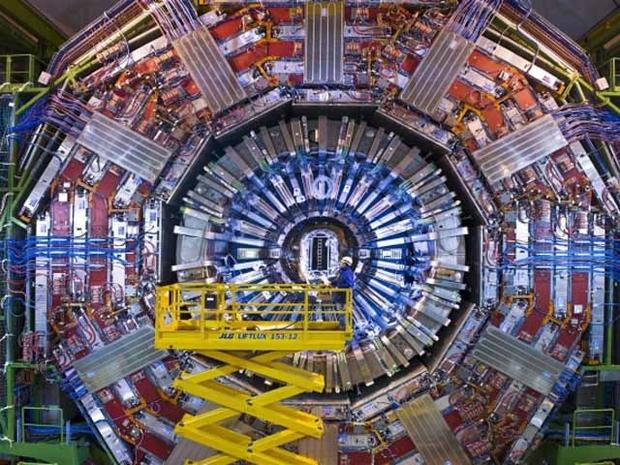Can atom smasher double as time machine?
The Large Hadron Collider as a time machine? According to a physics professor and his assistant, the world's largest atom smasher could indeed allow people to travel back in time.
Theoretical? To be sure. But they say it's theoretically possible.
"Our theory is a long shot, but it doesn't violate any laws of physics or experimental constraints," said Vanderbilt University physicist, Tom Weiler, in a statement.
Weiler and Vanderbilt graduate fellow Chui Man Ho, outline their theory in a paper on a site operated by Cornell.
The atom smasher, which began operations last year, was built, in part, to help scientists in their search for the elusive Higgs boson, part of an invisible force field believed to give mass to particles in the cosmos. Nobody has ever actually observed the Higgs boson in an experiment to confirm the theory that was put forward by physicists Peter Higgs, Robert Brout and Francois Englert.
Weiler and Ho suggest that if the LHC can reproduce a Higgs boson, it will also be able to produce a related particle, called the Higgs singlet, at the same time. This is the crucial ingredient as they theorize that these singlets would serve as jumping off points with the ability to move into other dimensions, moving across time.
"One of the attractive things about this approach to time travel is that it avoids all the big paradoxes," Weiler said. "Because time travel is limited to these special particles, it is not possible for a man to travel back in time and murder one of his parents before he himself is born, for example. However, if scientists could control the production of Higgs singlets, they might be able to send messages to the past or future."
There's a big plus to this approach to time travel, according to Weiler, who says it does an end-around avoiding some major big paradoxes.
"Because time travel is limited to these special particles," he said, "it is not possible for a man to travel back in time and murder one of his parents before he himself is born, for example. However, if scientists could control the production of Higgs singlets, they might be able to send messages to the past or future."
Obviously, a lot of "ifs" are involved here - a fact that Vanderbilt acknowledged in its release.
Weiler and Ho's theory is based on M-theory, a "theory of everything." A small cadre of theoretical physicists have developed M-theory to the point that it can accommodate the properties of all the known subatomic particles and forces, including gravity, but it requires 10 or 11 dimensions instead of our familiar four. This has led to the suggestion that our universe may be like a four-dimensional membrane or "branes" floating in a multi-dimensional space-time called the "bulk."If the physicists working at the European Organization for Nuclear Research, which operates the Large Hadron Collider, begin seeing Higgs singlet particles and their decay products spontaneously appearing, Weiler and Ho believe that would offer the evidence they need to prove the materials were generated by particles which traveled back in time "to appear before the collisions that produced them."
According to this view, the basic building blocks of our universe are permanently stuck to the brane and so cannot travel in other dimensions. There are some exceptions, however. Some argue that gravity, for example, is weaker than other fundamental forces because it diffuses into other dimensions. Another possible exception is the proposed Higgs singlet, which responds to gravity but not to any of the other basic forces.
